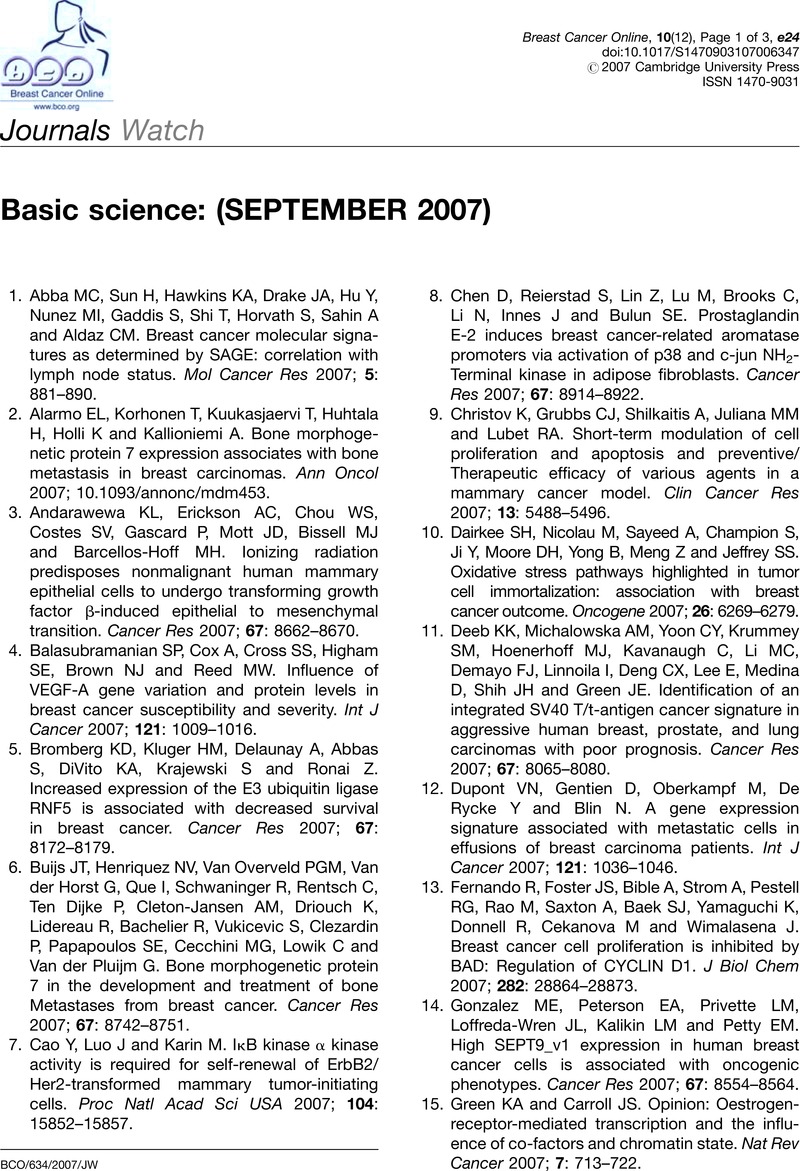27. Milliken EL, Lozada KL, Johnson E, Landis MD, Seachrist DD, Whitten I, Sutton ALM, Abdul-Karim FW, Keri RA. Ovarian hyperstimulation induces centrosome amplification and aneuploid mammary tumors independently of alterations in p53 in a transgenic mouse model of breast cancer.
Oncogene 2007;
10.1038/sj.onc.1210815.
CrossRefGoogle Scholar 